Tourcode: EG3
- Overview
- Info & Inclusions
- Itinerary
- Map & Hotels
- Photos
- Dates & Prices
- Max Group Size 18
- The Grand Egyptian Museum's Tutankhamun immersive exhibition with digital projections into the boy king's golden world
- Giza's Great Pyramid built from two million stone blocks by 100,000 labourers
- Abu Simbel's colossal temple where Ramesses II's four 20-metre statues guard Nubia's threshold
- The Valley of the Kings where pharaohs carved elaborate underground palaces into pyramid-shaped cliffs
- Karnak Temple's hypostyle hall with 134 massive columns supporting three-millennia-old stone roofs
- Camel trek across desert sands to St. Simeon's 6th-century monastery rising dramatically against limestone escarpments
- Singles friendly (view options for single travellers)
- Full-time Tour Leader services
- Breakfast and dinner are included daily
- All transport, accommodation, sightseeing and entrance fees for sites noted as 'visited' in the detailed itinerary
- Gratuities for drivers, restaurant staff, porters, local guides
- Airport transfers for travellers who are arriving/departing on tour dates and book their air through us
- Any early arriving/late departing travellers who book both their air and extra nights through us.
- International airfare to/from the tour.
- Tour Leader gratuities, most lunches, drinks, personal items (phone, laundry, etc), international (if applicable) and domestic air taxes, visa fees, and any excursions referenced as 'optional'.
- Airport transfers for Land Only customers.
- Optional trip cancellation insurance.
- Seasonality and Weather:
Egypt's dry, sunny climate makes it ideal for archaeological exploration during the cooler months when our tours operate. The Nile Valley receives minimal rainfall year-round, with consistently clear skies perfect for temple visits and photography of ancient monuments.
October-November: Temperatures moderate from summer's intensity, offering warm, comfortable days ideal for extensive site touring. Mornings and evenings remain pleasant, while midday warmth is manageable. This shoulder season provides excellent conditions without winter's occasional cooler spells.
January-March: Egypt's peak season brings the most temperate weather, with mild daytime temperatures perfect for exploring temples and tombs. Mornings can feel crisp, particularly in desert locations like Abu Simbel, while afternoons remain comfortably warm. Evenings turn cooler, especially in Cairo and along the Nile, making light layers advisable. - Transport and Travel Conditions:
Over two weeks we travel by bus, felucca sailboat, plane, donkey cart, and camel. Distances covered are not great and roads are generally good, despite the traffic.
We travel overland between Aswan and Luxor rather than by Nile cruise, allowing us to include additional sites beyond Kom Ombo and Edfu while enjoying private sightseeing instead of joining combined cruise ship groups. This independence lets us avoid peak crowds when ships dock simultaneously. Though Nile cruises hold romantic appeal, ships spend most time moored at docks in Luxor and Aswan, with actual sailing often occurring at night due to transit lock schedules. Our overland approach maximizes site access and touring flexibility while minimizing downtime.
Our rating "Level 2" on this tour refers to its ambitious nature, full days, and plenty of time spent on your feet. Some days involve some early starts as dictated by internal flights as well as some excursions, ie Abu Simbel, for which early departures are necessitated by distance and traffic. Many sites visited are LARGE; surfaces are uneven and sloped, and stairs will factor into our visits. Heat can also be a factor in some locations which can, over time, cause fatigue. This is not an 'easy' tour; if you are unsteady or slow on your feet, rely heavily on a cane or any other mobility aid, or tire easily, we regret that this tour would likely not be suitable.
Though baggage handling is available throughout, you must still be able to fully manage yourself and your things, especially at airports.
Am I suitable for this tour? Please refer to our self-assessment form - Activity Level: 2
These are particularly busy tours that feature a lot of moving around, sometimes by train and short journeys on local transport. Walking tours of towns and cities are leisurely but you should be prepared to be on your feet for several hours. Some of our cultural trips that occur at high altitude and/or require greater independence with baggage handling (at hotels, airports, train stations) also fall into this category.
To learn more about the Activity levels, please visit our tour styles page. - Accommodation:
Throughout, expect 4 & 5* hotels with comfortable rooms, air conditioning, and on-site dining. Properties are selected for reliability, cleanliness, and locations minimising travel time to archaeological sites.
Please click on the "Map & Hotels" tab for more information. - Staff and Support:
Tour Leader throughout, local drivers, local guides at various locations. - Group Size:
Maximum 18 (plus Tour Leader)
- Day 1:Arrive in CairoWelcome to Cairo, where the Nile's life-giving waters have sustained one of history's greatest civilisations for over five millennia. The city's Arabic name, Al-Qahira, means "The Vanquisher" - a fitting title for this sprawling metropolis of over 21 million souls.
As you transfer to the hotel, you enter a city nicknamed "The City of a Thousand Minarets" for its Islamic architectural splendour. Cairo has long served as the political and cultural heartbeat of the Arab world, where ancient stones stand alongside modern towers and where the calls to prayer echo across neighborhoods both wealthy and humble. Tonight we gather with fellow travellers for our first evening meal, beginning an extraordinary journey through lands where humanity first learned to build monuments for eternity.
Overnight in Cairo
Included Meal(s): Dinner, if required - Day 2:Cairo: Great Pyramids & the Sphinx - Grand Egyptian MuseumThis morning we stand before the Great Pyramids of Giza, one of humanity's most audacious architectural achievements. Over 100,000 labourers toiled for two decades to raise Cheops' eternal tomb 135 metres (443 feet) skyward using more than two million stone blocks, each weighing an average of 2.5 tonnes. The precision astounds - the base covers 5.3 hectares yet the sides vary by only 4 centimetres. You may venture inside through narrow passages to explore the inner chambers where pharaohs dreamed of immortality (optional, extra fee).
The enigmatic Sphinx crouches nearby, carved from a single limestone outcrop. For 4,500 years this lion-bodied, human-headed guardian has gazed across the desert toward the rising sun. Ancient Greeks named it after their mythical riddling monster - a fitting metaphor for a monument that still poses unanswered questions to archaeologists and visitors alike.
We then journey to the spectacular Grand Egyptian Museum, one of the world's largest archaeological museums. This architectural marvel houses over 100,000 artefacts spanning 7,000 years of civilization. We break for lunch at onsite restaurants before our guided exploration of the "Kingship and Eternity" galleries. The Hanging Obelisk soars overhead in the dramatic atrium, while the Colossal Statue of Ramesses II - weighing 83 tonnes - commands the grand staircase. Victory columns, sarcophagi, and treasures reveal the extraordinary sophistication of ancient Egyptian culture.
Our visit culminates with "Tutankhamun - The Immersive Exhibition," where state-of-the-art digital projections transport us through 3,400 years into the mesmerizing world of the boy king who died at just nineteen yet achieved immortality through his undisturbed tomb.
Overnight in Cairo (Giza).
Included Meal(s): Breakfast and Dinner - Day 3:Cairo: Dahshur, Memphis & SaqqaraWe journey south through fertile Nile Valley villages to Dahshur, where Pharaoh Senefru's experimental pyramids tell the story of architectural evolution. Built between 2613-2589 BCE, the Bent Pyramid and Red Pyramid represent crucial learning that made the Great Pyramid possible - the transition from stepped to smooth-sided design that would define Egypt's architectural legacy.
Next we visit Memphis, capital during the Old Kingdom (2700-2180 BCE), where colossal statues and artifacts reveal the grandeur of this ancient administrative centre. We continue to Saqqara's necropolis, dominated by the Step Pyramid - Egypt's oldest major stone building. Master architect Imhotep revolutionized tomb design in the 27th century BCE, stacking six levels until his creation soared 62 metres (203 feet) high.
We explore the mysterious Serapeum, where sacred Apis bulls associated with god Ptah were entombed. An avenue of sphinxes leads to underground corridors that once housed these mummified, revered creatures in massive stone sarcophagi - testament to the extraordinary role animals played in Egyptian religious life.
Overnight in Cairo (Giza).
Included Meal(s): Breakfast and Dinner - Day 4:Cairo - Fly to Aswan: The High Dam, Unfinished Obelisk & Philae TempleWe fly south to Aswan in Upper Egypt, Egypt's sunniest frontier town blessed with the Nile's most beautiful setting. Small enough to walk around yet steeped in ancient importance, Aswan's relaxed pace offers welcome respite after Cairo's intensity.
Our first stop is the High Dam, a modern marvel constructed between 1960 and 1971 to finally tame the Nile's annual flood. This massive engineering project created Lake Nasser, one of the world's largest artificial lakes. From this vantage point, panoramic views stretch north across Aswan's islands and palm groves, while southward the lake extends toward Africa's heart like a shimmering blue ribbon.
By boat we journey to dramatically situated Philae Temple on its island sanctuary. Dedicated to the goddess Isis, this relatively modest complex captivates through its stunning island setting and excellent preservation. The elegant colonnades and intricate hieroglyphic carvings tell stories of gods and pharaohs against the backdrop of Nile waters - creating one of Egypt's most romantic archaeological sites.
We conclude at the Unfinished Obelisk, where ancient stonemasons abandoned their work when cracks appeared during carving directly from bedrock. Had it been completed, this single piece of granite would have stood 42 metres tall and weighed nearly 1,200 tonnes. This remarkable quarry reveals ancient stone-working secrets - chisel marks and ochre-coloured guide-lines remain clearly visible after millennia.
NOTE: Sightseeing order in Upper Egypt may vary with flight schedules and weather. Your Tour Leader will advise of adjustments.
Overnight in Aswan.
Included Meal(s): Breakfast and Dinner - Day 5:Aswan: St. Simeon Monastery & Kitchener's IslandThis morning we cross the Nile by private boat to the west bank, where our unique adventure begins - a camel trek across sandy desert to the Christian Monastery of St. Simeon. Before mounting up, our Tour Leader and experienced camel handler teach proper riding techniques. This gentle 45-minute journey to the monastery (15 minutes return) suits travellers of any age, with one rider per camel creating an authentic desert experience. Those preferring not to ride can travel comfortably by truck.
Dating from the 6th century and actively used until the 13th century, St. Simeon's Monastery ranks among Egypt's best-preserved Christian sites. The massive mud-brick and stone structure rises dramatically against the desert landscape. We explore the atmospheric chapel where Coptic Christians once worshipped, wander through monks' living quarters imagining their austere daily life, and discover the kitchen, wine press, and storage rooms. Faint traces of Coptic frescoes still adorn some walls - ghostly images of Christ, saints, and geometric patterns that have survived centuries of desert winds.
Returning to the Nile, we cruise among the islands that dot this beautiful stretch of river. The elegant Mausoleum of the Aga Khan rises above the water in pink granite, built in 1957 for the spiritual leader of the Ismaili Muslims. The main island, Elephantine, earned its evocative name because riverside rocks resemble a herd of elephants bathing in the current. On enchanting Kitchener's Island, we stroll through lush botanical gardens bursting with exotic species collected from across the empire by the British general. Our day concludes with a leisurely felucca sail on one of these graceful traditional vessels, their white lateen sails catching the breeze as they've done for millennia.
Overnight in Aswan.
Included Meal(s): Breakfast and Dinner - Day 6:Aswan: Abu SimbelA pre-dawn departure by road (approximately 3 hours, each way) takes us south from Aswan across the Western Desert to Nubia, or the "Land of the Gold." Our destination this morning is the awe-inspiring Abu Simbel - the imposing rock temples of Ramesses II and his queen, Nefertari.
We have a guided tour of this site, including the interior of the colossal temples. The Temple of Ramesses II, with its immense statues of the Pharaoh seated on his throne, is one of the classic images of the power of the Pharaohs. Four 20-metre (65-foot) colossi flank the entrance, their weathered faces gazing across the desert with timeless authority. Inside the temple you will see well-preserved wall decorations and several murals. There is a wonderful relief of Ramesses presenting captives to various gods, including himself - demonstrating the pharaoh's divine status. We also gain insight into the reconstruction process by visiting the interior of the artificial mountain, where UNESCO's monumental 1960s relocation effort saved these temples from Lake Nasser's rising waters.
We return by road to Aswan in time for a late lunch. When visiting Abu Simbel we choose to travel by road instead of flying as the air schedules tend to be rather restrictive and do not always allow enough time at the site (much time is taken up by check-in, security, boarding, transferring etc). Driving frees us from this inconvenience and adds flexibility, plus allows us to see the High Dam en route. Departing very early ensures that we are at the site at the optimal time for photography; later in the morning, shadows fall across the temple making conditions less than ideal.
Overnight in Aswan.
Included Meal(s): Breakfast and Dinner - Day 7:Aswan - Luxor via Kom Ombo & EdfuWe farewell Aswan and journey north by road to Kom Ombo Temple, dramatically positioned on a promontory overlooking the Nile. In ancient times, Kom Ombo held strategic importance as a vital trading town on the caravan route from Nubia to Cairo. This unique temple is actually two sanctuaries in one, dedicated to both Horus the falcon-headed sky god and Sobek the crocodile deity. The dual design creates perfect symmetry - everything is doubled, from entrances to sanctuaries.
We see remains of mummified crocodiles, testament to when these fearsome creatures thrived in the Nile's waters and received worship as living gods. Today, crocodiles no longer inhabit Egypt's portion of the great river, but ancient reliefs and mummified specimens remind us of their once-sacred status.
From Kom Ombo we continue to Edfu, home to the largest and most completely preserved Pharaonic temple in Egypt, though ironically built by Greek rulers. Dedicated to Horus, construction began under Ptolemy III in 237 BCE and continued for nearly two centuries. We explore this massive complex enclosed by towering walls and flanked by enormous pylon gateways. Inside, we examine the fascinating Nilometer - an ingenious ancient device for measuring the river's water fluctuations. These measurements weren't merely academic; they determined tax levels, as higher floods meant better harvests and greater tax revenue for the state.
Overnight in Luxor.
Included Meal(s): Breakfast and Dinner - Day 8:Karnak Temple & Luxor TempleWe begin with magnificent Karnak Temple, built, enlarged, and decorated over 1,500 extraordinary years. At certain points in ancient history, this served as Egypt's most important religious complex, the beating heart of the kingdom's spiritual life. The tremendous pylon gateway looms before us, while the legendary Avenue of Sphinxes once stretched all the way to the Nile's edge. Inside, we tour the vast hypostyle hall where 134 massive columns soar skyward, their capitals supporting stone roofs that have endured three millennia. The scale demonstrates architectural ambition almost beyond comprehension.
After a break for lunch, evening brings us to Luxor Temple. Built during the New Kingdom, this complex served as focal point for the annual Opet Festival, one of ancient Egypt's most important celebrations. During this festival, priests paraded Amun's golden cult statue down the Nile from nearby Karnak Temple in elaborate boats, accompanied by music, dancing, and offerings. This fertility celebration reinforced the pharaoh's divine connection to the gods and brought the entire community together in shared ritual.
Dedicated to the Theban Triad - Amun, his consort Mut, and their son Chons - Luxor Temple ranks among the largest ancient Egyptian temple complexes. The massive entrance tower built by King Ramesses II still dominates the approach, flanked by colossal seated statues of the great pharaoh himself.
Overnight in Luxor.
Included Meal(s): Breakfast and Dinner - Day 9:Luxor: Valley of the KingsMorning mist rises from the Nile as we cross by boat to the West Bank, where limestone cliffs conceal the most spectacular royal cemetery ever created. The early morning air carries whispers of ancient secrets as we meet our donkey-cart transport for a journey into the Valley of the Kings through New Gourna Village.
Our charming donkey-cart ride takes us through countryside where modern fellahin (farmers) tend fields much as their ancestors did millennia ago. Children wave from mud-brick houses, women carry water jars on their heads, and farmers guide oxen through irrigation channels. This 40-45 minute journey through timeless rural scenes connects us to the eternal rhythms of Nile life before we reunite with road transport for the final approach.
In this isolated valley dominated by pyramid-shaped mountains, we enter the sacred necropolis where New Kingdom pharaohs chose to hide their tombs from grave robbers. For over 500 years, from Tuthmosis I to Ramesses XI, Egypt's god-kings carved elaborate underground palaces into the limestone cliffs. We tour three carefully selected tombs, each revealing different aspects of ancient Egyptian funerary art and beliefs. Note that some tombs have steep stairways and all are quite dark inside (a pocket flashlight proves useful).
The Valley of the Kings represents ancient Egypt's most ambitious attempt to ensure royal immortality. Unlike the obvious pyramids, these hidden tombs were meant to remain secret forever, their elaborate chambers filled with everything a pharaoh needed for the afterlife journey.
We proceed to Queen Hatshepsut's funerary temple - built for Egypt's first woman to rule as pharaoh. Rising in terraced splendour against towering cliffs, this architectural marvel was discovered in the mid-19th century and remains under restoration. As afternoon shadows lengthen across ancient stones, we return through countryside to the East Bank, where we suggest visiting the excellent Luxor Museum or Mummification Museum during free time.
Tonight you may choose to attend the optional Sound and Light show at Karnak Temple, where ancient stories unfold against illuminated columns.
We do not include King Tut's tomb, as it's very small and relatively uninteresting, but we allow time if you wish to see it (separate ticket).
Overnight in Luxor.
Included Meal(s): Breakfast and Dinner - Day 10:Luxor: Valley of the QueensThis morning we cross the Nile once more to explore the Valley of the Queens, known to ancient Egyptians as "Set Neferu" - the "Seat of Beauty." This evocative necropolis served as the eternal resting place for royal women of the 18th, 19th and 20th Dynasties, though despite its name, the valley holds far more than queens' tombs. Princes, princesses, and high-ranking nobles also found their final rest in these painted chambers carved into the western cliffs.
Of approximately eighty tombs, only a handful open to visitors; we tour three carefully selected examples. The artwork here differs from the kings' tombs - more intimate, often featuring family scenes and goddesses protecting the deceased. Vibrant colours remain remarkably preserved in the dry desert air. An optional visit to Queen Nefertari's spectacular tomb is available for an extra charge (your Tour Leader advises the current fee). Nefertari's tomb, discovered in 1904, contains some of the finest ancient Egyptian art ever found - the colours so vivid they seem painted yesterday rather than 3,200 years ago.
We also explore Deir el-Medina, the fascinating workers' village where artisans and craftsmen who created the royal tombs lived with their families. These weren't slaves but skilled, well-paid professionals who left behind a treasure trove of everyday artefacts revealing intimate details of ordinary ancient Egyptian life. Finally, we tour the massive mortuary temple of Ramesses III at Medinet Habu. Ancient belief held this site sacred as the place where the god Amun first manifested on earth. Both Hatshepsut and Tuthmosis III built temples here before Ramesses III constructed his even grander complex, its walls covered with detailed reliefs of military campaigns and religious rituals.
Due to periodic unannounced closures, your Tour Leader may substitute the equally fascinating Tombs of the Nobles.
Overnight in Luxor.
Included Meal(s): Breakfast and Dinner - Day 11:Luxor: Dendera Temple & Time at LeisureThis morning we enjoy an excursion to the fascinating temple of Dendera located north of Luxor on the banks of the Nile.
Dendera Temple is one of the best-preserved temple complexes in Egypt. Located in the city of Qena (60 km/37 miles north of Luxor) Dendera was constructed for the worship of Goddess Hathor, goddess of love, beauty, and motherhood in the ancient Egyptian religion. The temple was founded by pharaoh Pepi I (2250 BCE) and continued during the New Kingdom (1550-1080 BCE). What was left dates back to the Greco-Roman time in Egypt. The recent cleaning of the ceiling of Dendera Temple has revealed some of the most vibrant and colourful paintings dating from antiquity. The temple has two decorated crypts, two halls with ceilings supported by columns and two funeral chapels, from where the famous "zodiac" from the Louvre comes.
We return to Luxor for some well-deserved free time for independent exploration, shopping, napping etc after some full days of touring. The Luxor Museum is also worthwhile, as it displays a very good contextual story of Luxor and the nearby valley of the Kings and Queens. The wooden sarcophagi are the highlight - so vivid that it's hard to believe they are thousands of years old.
Overnight in Luxor.
Included Meal(s): Breakfast and Dinner - Day 12:Luxor - Cairo: Museum of Egyptian AntiquitiesToday we fly back to Cairo.
On arrival we proceed to the famous Museum of Egyptian Antiquities, where we enjoy a guided tour of some of Egypt's most beloved treasures. Among the 100,000 pieces housed on the museum's two floors is the famous exhibit of Tutankhamun whose tomb was discovered by Howard Carter in 1922. The tomb and treasures of this young Pharaoh, modest by Pharaonic Egyptian standards, is perhaps the best-preserved of the discovered tombs. We also see archaeological relics from the Old Kingdom, Middle Kingdom, New Kingdom and Greco-Roman periods. There is also a separated area devoted to the best-known of the Tut antiquities (the Mummies Room), which you can enter for an optional extra fee (ask your Tour Leader for the current rate).
NOTE: With the opening of the GEM and the unclear situation regarding the fate of the original museum, and the timing/choosing of which artefacts will be moved and which will remain, we'll plan to visit both facilities for now and adjust this program as things become clearer. Regardless of location, however, we definitely plan to see the Tut relics wherever they may be at the time of our visit.
Overnight in Cairo (central).
Included Meal(s): Breakfast and Dinner - Day 13:Cairo: Coptic & Islamic Cairo - Khan el KhaliliToday we visit the new National Museum of Egyptian Civilization (NMEC), a nice addition to the Cairo museum landscape and an excellent way to recap all that we have done and seen during our tour.
We then drive through the neat, tree-lined streets of the Garden City area to Coptic Cairo, the centre of Christianity in Cairo. We will walk the cobblestone streets and stop at a few of the churches, including that of Saint Sergius, presumed to be the spot where the Holy Family lived during their flight into Egypt. The present building dates from the 11th century. As we stroll along we will come to the recently restored Synagogue of Ben Ezra, the oldest Jewish synagogue in Egypt. Despite the 45 Jewish families that remain in Cairo, the synagogue is no longer operational.
We then proceed to Islamic Cairo, where we will tour the Citadel, begun by Saladin in the 12th century. Today the Citadel's buildings are mainly from the Ottoman period, and are truly grand. From the Citadel, actually a complex of three mosques and four museums, we enjoy an amazing view of Cairo spread beneath the hilltop. Here we will see the fabulous Mosque of Mohammed Ali, also known as the "Alabaster Mosque."
Finally we make a stop at Khan el Khalili, one of the most interesting bazaars, not only in Egypt, but also in all the Middle East. The atmosphere of this traditional market, together with the labyrinthine layout of the streets, gives visitors a glimpse into what medieval markets were once like. The narrow lanes overflow with spices, textiles, jewellery, and crafts - a sensory feast where the scent of incense mingles with calls of vendors and the glint of brass lanterns.
NOTE: The Coptic Cairo section of our program exists here on a tentative basis given ever-changing security considerations in this district. Your Tour Leader will advise of the current status once you have arrived on tour and a substitution may be put into place.
Overnight in Cairo (central).
Included Meal(s): Breakfast and Dinner - Day 14:DepartureDeparture from Cairo.
RHLAH S'IDAH!
Included Meal(s): Breakfast
Countries Visited: Egypt
*The red tour trail on the map does not represent the actual travel path.
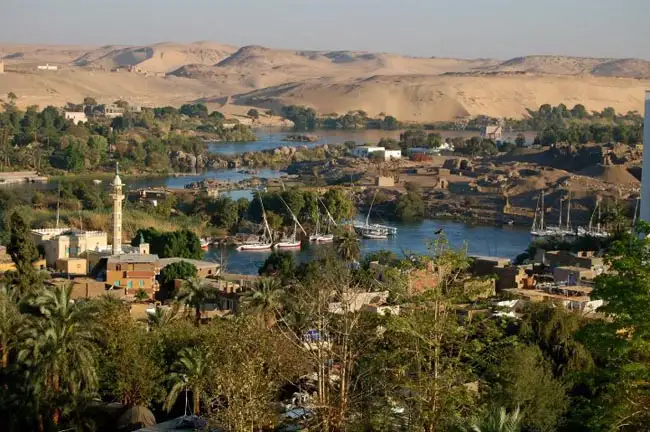
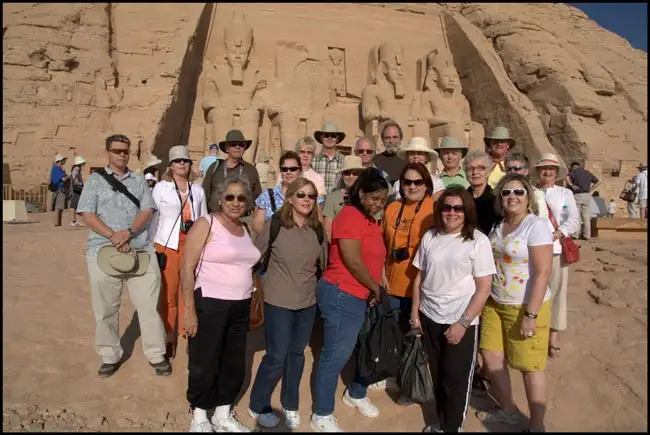
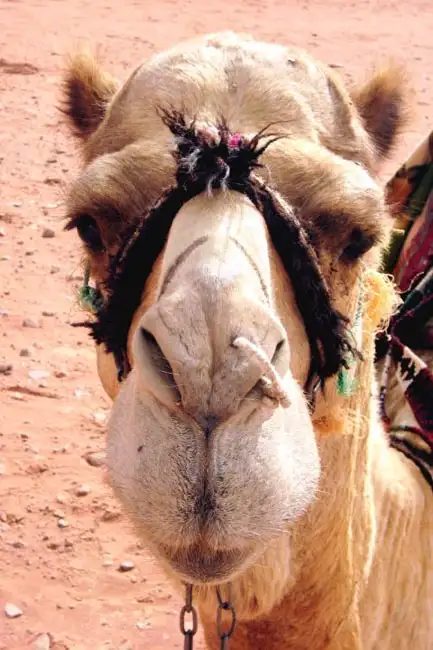
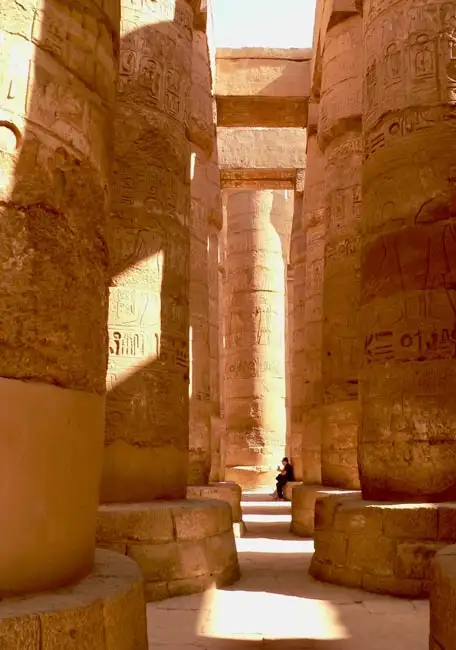
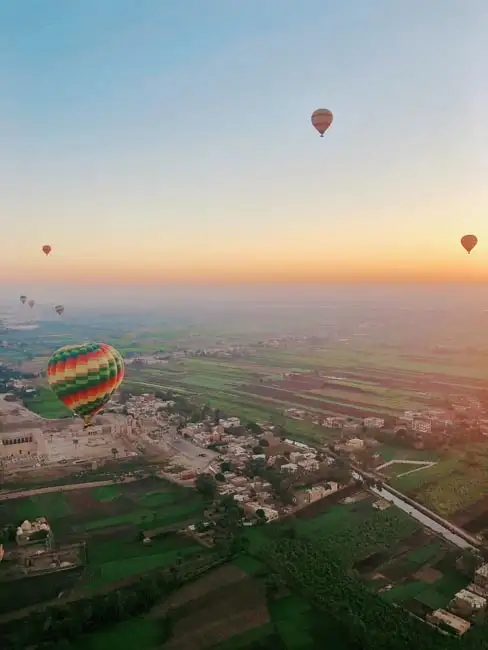
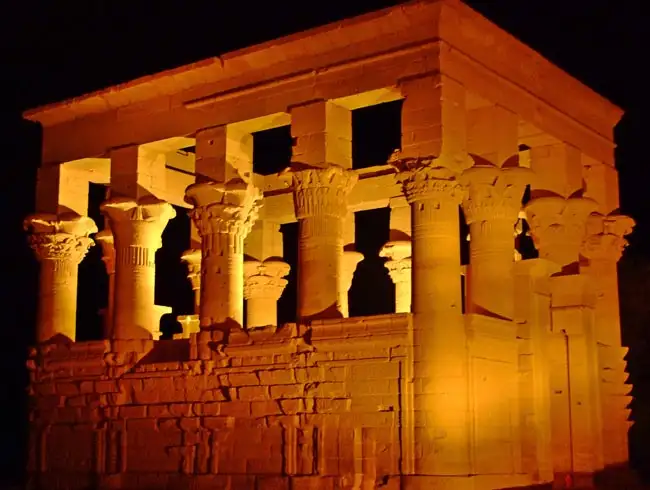
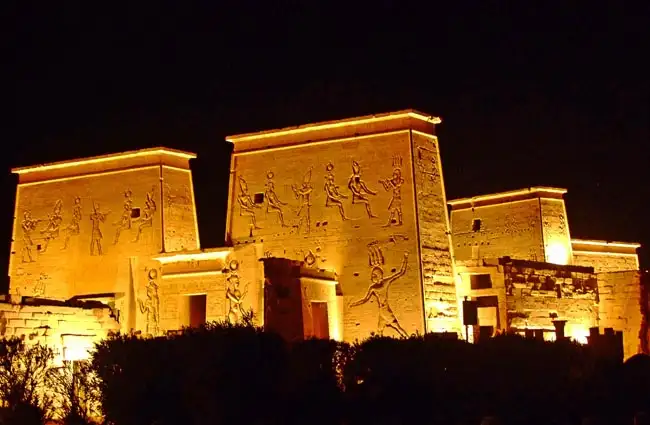
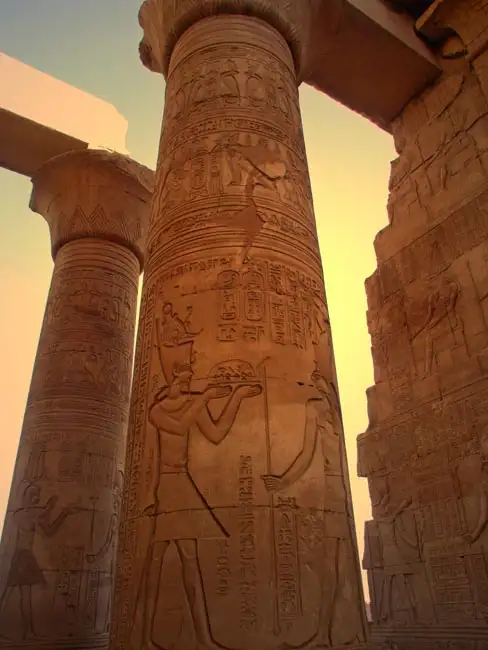
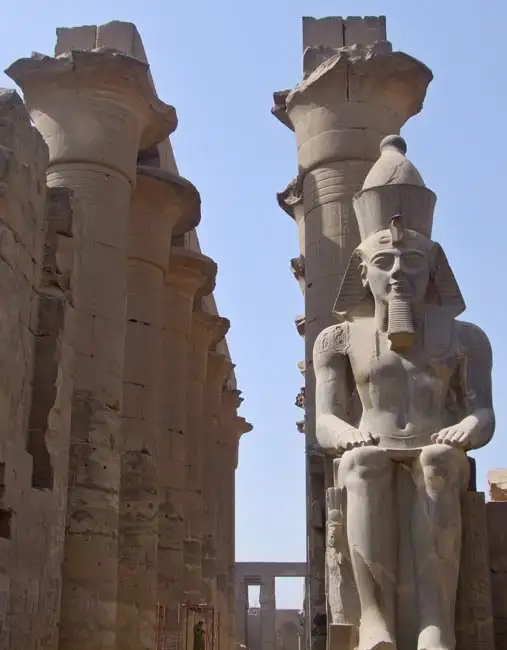
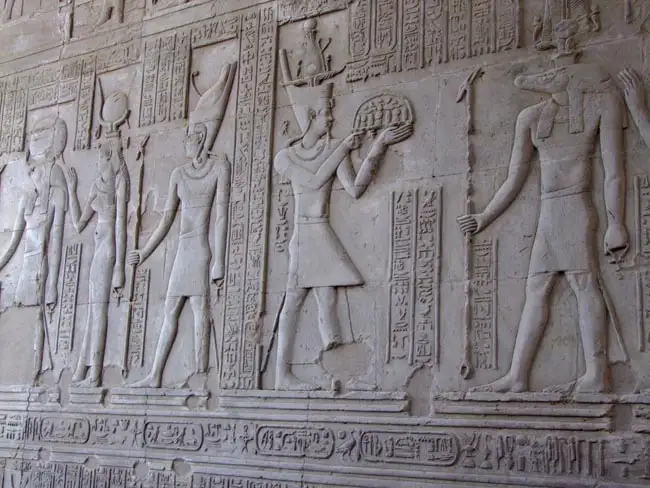
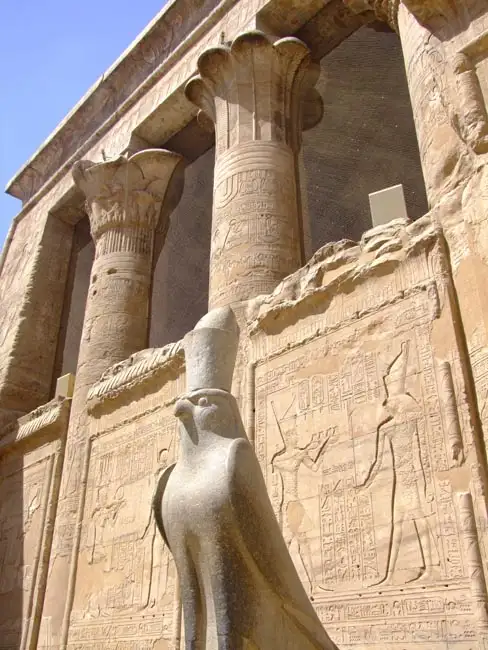
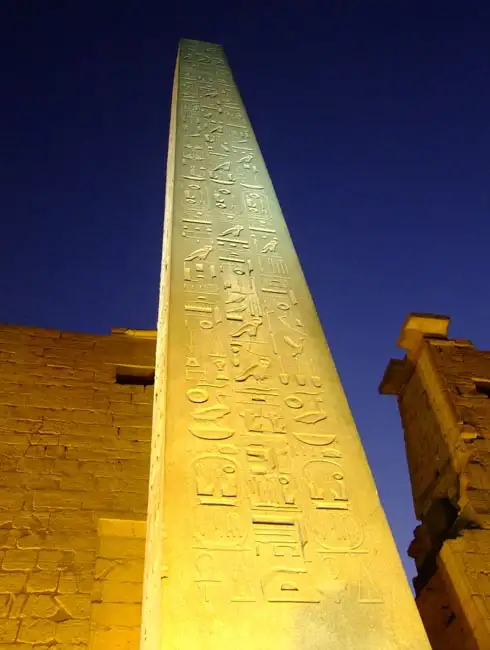
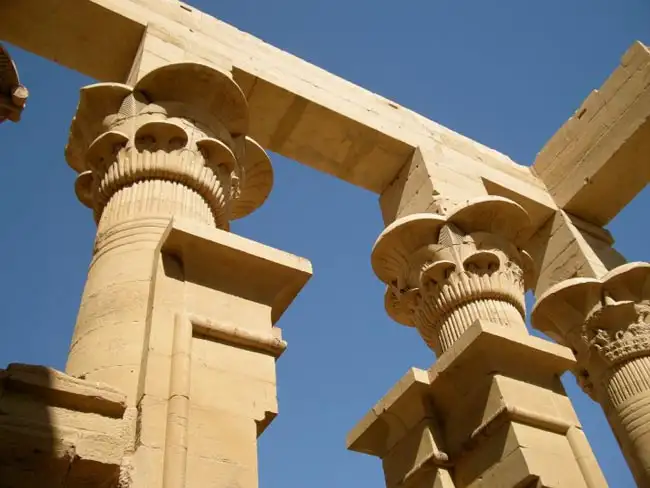
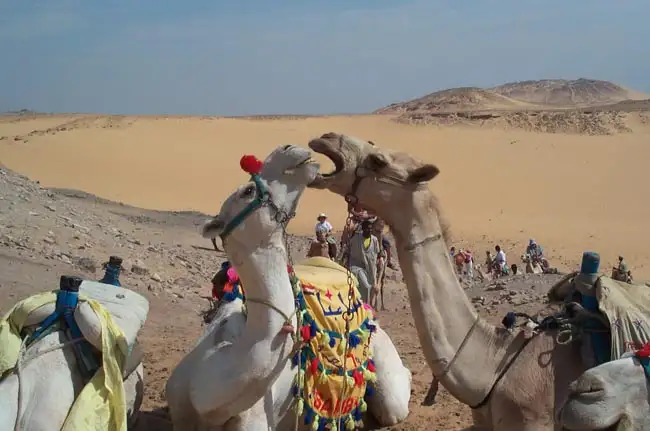
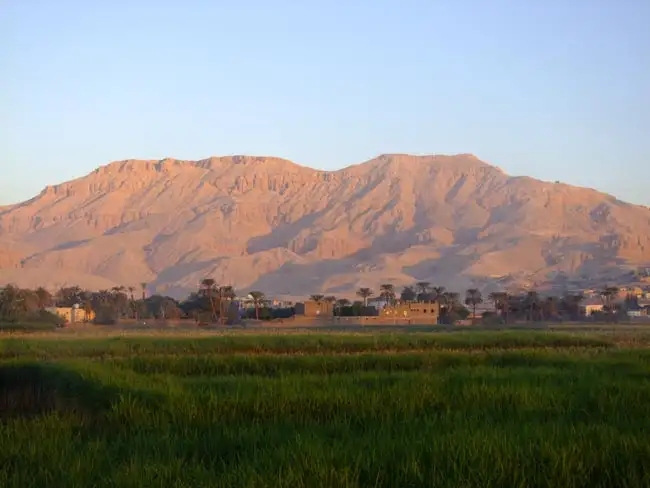
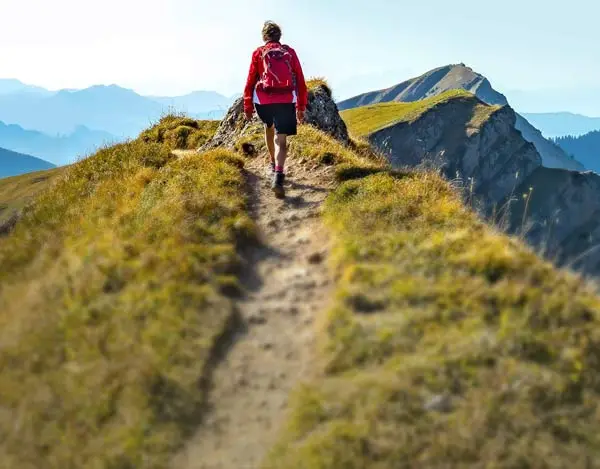
Book This Tour
- Final payment: Due 90 days prior to departure.
- Deposit: A non-refundable $500 CAD Deposit is required at booking.
- Optional Single Supplement: $1820 CAD (number of singles limited).
(View options forsingle travellers) - Transfering Tour or Date: Transferring to another tour or tour date is only permissible outside of 120 days prior to departure and is subject to a $100 CAD change fee.
(Read our cancellation policy)
Prices below are per person, twin-sharing costs in Canadian Dollars (CAD). Pricing does not include airfare to/from the tour and any applicable taxes.
Tourcode: EG3
Frequently Asked Questions
- What is the maximum number of participants on a trip?Most of our tours carry a maximum of 18 participants; some tours (ie hiking tours) top out at 16. In the event that we do not achieve our minimum complement by our 90-day deadline, we may offer group members the option of paying a "small-group surcharge" as an alternative to cancellation. If all group members agree, we will confirm the trip at existing numbers; this surcharge is refundable in the event that we ultimately achieve our regular minimum. If the small group surcharge is not accepted, we will offer a refund of your deposit or a different trip of your choice.
- Can I extend my tour either at the beginning or end? What about stopovers?Yes, you can extend your tour either at the beginning or the end and we can book accommodation in our tour hotel. Stopovers are often permitted, depending on air routing. Stopovers usually carry a "stopover" fee levied by the airline.
- How do I make a reservation? How and when do I pay?The easiest way to make a reservation is via our website; during office hours, you are also more than welcome to contact us by telephone.
A non-refundable deposit is payable at the time of booking; if a reservation is made within 90 days, full payment is required. Some trips require a larger deposit. If international airline bookings require a non-refundable payment in order to secure space or the lowest available fare, we will require an increase in deposit equal to the cost of the ticket(s).
Early enrolment is always encouraged as group size is limited and some trips require greater preparation time.
Once we have received your deposit, we will confirm your space and send you a confirmation package containing your trip itinerary, any visa/travel permit related documents, invoice, clothing and equipment recommendations, general information on your destination(s), and forms for you to complete, sign and return to us. Your air e-tickets (if applicable), final hotel list, final trip itinerary, and instructions on how to join your tour, will be sent approximately 2-3 weeks prior to departure. - What about cancellations, refunds, and transfers?Please review our cancellation policy page for details.
- I am a single who prefers my own room. What is a single supplement?All of our tours have a single supplement for those who want to be guaranteed their own room at each location.
This supplement is a reflection of the fact that most hotels around the world do not discount the regular twin-share rate for a room by 50% for only one person occupying a room. Most hotels will give a break on the price, but usually in the range of 25-30% of the twin-share rate. This difference, multiplied by each night, amounts to the single supplement.
The conventional amount can also vary from country to country and some destinations are more expensive than others for single occupancy. In order to be "single friendly," the supplements we apply are not a profit centre for us and we do our best to keep them as reasonable as possible.
On most tours we limit the number of singles available, not to be punitive, but rather because many hotels allow for only a limited number of singles; some smaller hotels at remote locations also have a limited number of single rooms available.
Please note that most single rooms around the world are smaller than twin-share rooms and will likely have only one bed. - Do you have a shared accommodation program?Yes! If you are single traveller and are willing to share, we will do our best to pair you with a same-gender roommate. Please note that should we fail to pair you, we will absorb the single supplement fee and you will default to a single room at no extra charge.
